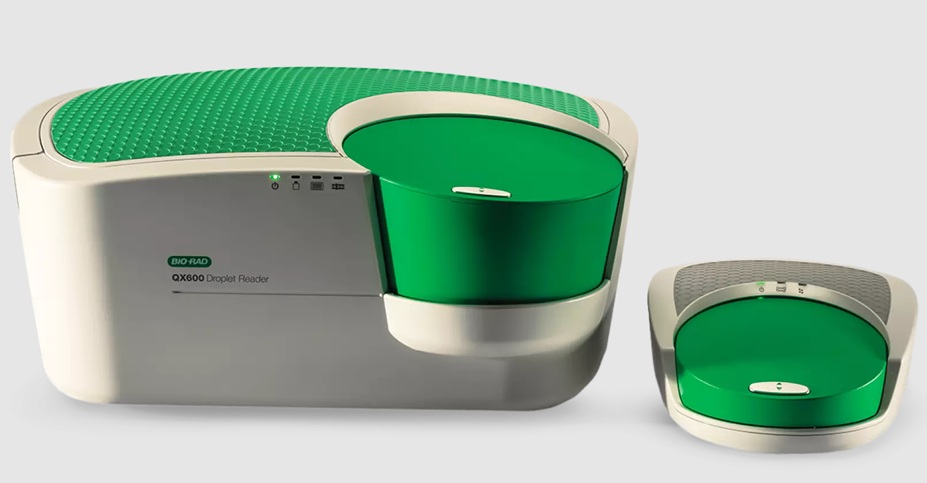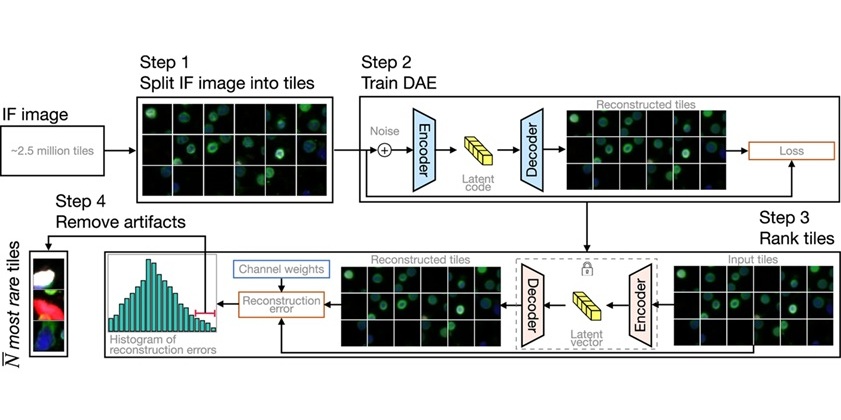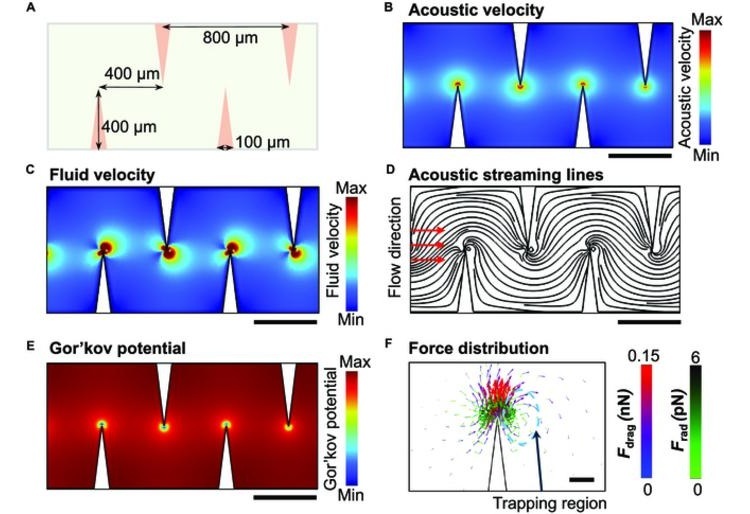Blood-Based Test Accurately Identifies Viral Infection Before Symptoms Develop
|
By LabMedica International staff writers Posted on 07 Oct 2020 |
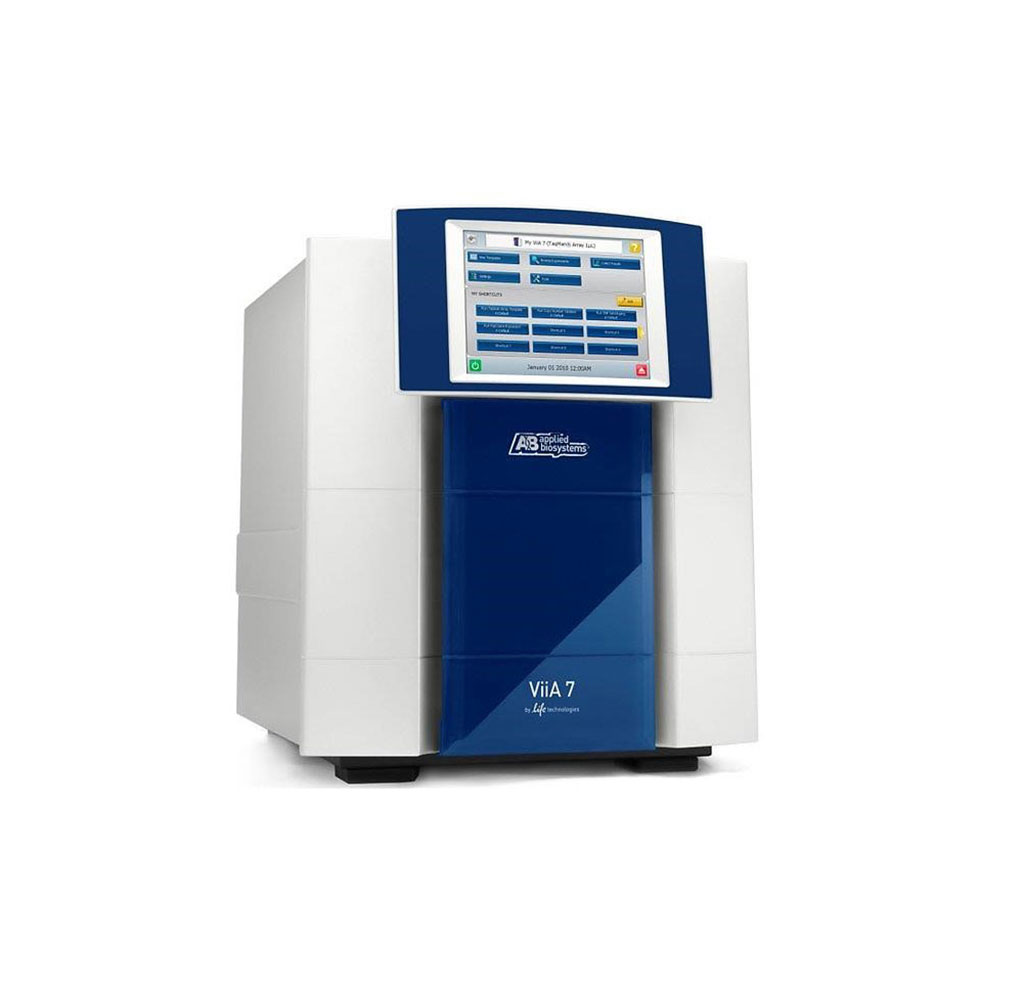
Image: The Applied Biosystems ViiA 7 Real-Time PCR System combines all of the qPCR features in a single high performance instrument (Photo courtesy of Thermo Fisher Scientific).
Acute viral infections are one of the most common reasons for visits to primary care physicians in high-income countries. The usefulness of traditional pathogen-focused diagnostic methods for viral infection (e.g., culture, serology, antigen detection, and PCR) is limited by the fact they can be slow, costly, and restricted in terms of breadth of pathogens detected.
Previous studies on diagnostics for naturally acquired infection has focused on identifying symptomatic individuals at the time of clinical presentation for medical care, which is often late in the time course of many viral infections. Identification of infectious causes in earlier, presymptomatic phases of illness provides an opportunity to optimize and deliver timely, and thus more effective, therapy, refine prophylaxis decisions, and guide public health interventions such as isolation and quarantine.
Infectious Disease specialists at Duke University Medical Center (Durham, NC, USA) and their associates enrolled 1,465 college students at the university between 2009 and 2015 and monitored them for the entire academic year for the presence and severity of eight symptoms of respiratory tract infections. Participants filled out a daily web-based survey, rating symptoms on a scale of 0-4. Index cases were defined as study participants who reported a 6-point increase in a cumulative daily symptom score. Biospecimens were collected from 264 index cases with clinical illness, of whom 150 had a respiratory viral cause confirmed by traditional PCR testing of nasopharyngeal samples.
Blood (20 mL) and nasopharyngeal swab samples were collected daily by study staff from confirmed index cases at the time of illness identification. The nasopharyngeal samples were tested for the presence of viruses using commercial multiplex PCR assays (ResPlex II Panel, Qiagen, Hilden, Germany), xTAG respiratory viral panel (Luminex Corporation, Austin, TX, USA), or BioFire FilmArray Respiratory Panel (BioFire Diagnostics, Salt Lake City, UT, USA). The team selected 36 pre-designed TaqMan probes representing genes comprising the acute respiratory viral signature (and normalization controls) to be used on a TaqMan Low Density Array platform run on a ViiA7 Real-Time PCR System (Applied Biosystems, Foster City, CA, USA).
The scientists reported that of the 555 close contacts enrolled and sampled, 162 developed symptoms of respiratory tract infection during observation, of whom 106 had confirmed illness based on traditional viral PCR testing. For most of the study participants, the gene expression test accurately predicted viral infection up to three days before maximum symptoms, often prior to any symptom onset or detectable viral shedding. For influenza, the assay was 99% accurate in predicting illness, 95% accurate for adenovirus and 93% accurate for the cold-causing coronavirus strain.
Micah McClain, MD, PhD, associate professor of Medicine and lead author of a study, said, “Our study demonstrates the potential of this gene expression-based testing approach. We can use the body's natural immune response signals to detect a viral infection with a high degree of accuracy even at a time when people have been exposed to the pathogen but don't yet feel sick.” The study was published on September 24, 2020 in the journal The Lancet Infectious Diseases.
Previous studies on diagnostics for naturally acquired infection has focused on identifying symptomatic individuals at the time of clinical presentation for medical care, which is often late in the time course of many viral infections. Identification of infectious causes in earlier, presymptomatic phases of illness provides an opportunity to optimize and deliver timely, and thus more effective, therapy, refine prophylaxis decisions, and guide public health interventions such as isolation and quarantine.
Infectious Disease specialists at Duke University Medical Center (Durham, NC, USA) and their associates enrolled 1,465 college students at the university between 2009 and 2015 and monitored them for the entire academic year for the presence and severity of eight symptoms of respiratory tract infections. Participants filled out a daily web-based survey, rating symptoms on a scale of 0-4. Index cases were defined as study participants who reported a 6-point increase in a cumulative daily symptom score. Biospecimens were collected from 264 index cases with clinical illness, of whom 150 had a respiratory viral cause confirmed by traditional PCR testing of nasopharyngeal samples.
Blood (20 mL) and nasopharyngeal swab samples were collected daily by study staff from confirmed index cases at the time of illness identification. The nasopharyngeal samples were tested for the presence of viruses using commercial multiplex PCR assays (ResPlex II Panel, Qiagen, Hilden, Germany), xTAG respiratory viral panel (Luminex Corporation, Austin, TX, USA), or BioFire FilmArray Respiratory Panel (BioFire Diagnostics, Salt Lake City, UT, USA). The team selected 36 pre-designed TaqMan probes representing genes comprising the acute respiratory viral signature (and normalization controls) to be used on a TaqMan Low Density Array platform run on a ViiA7 Real-Time PCR System (Applied Biosystems, Foster City, CA, USA).
The scientists reported that of the 555 close contacts enrolled and sampled, 162 developed symptoms of respiratory tract infection during observation, of whom 106 had confirmed illness based on traditional viral PCR testing. For most of the study participants, the gene expression test accurately predicted viral infection up to three days before maximum symptoms, often prior to any symptom onset or detectable viral shedding. For influenza, the assay was 99% accurate in predicting illness, 95% accurate for adenovirus and 93% accurate for the cold-causing coronavirus strain.
Micah McClain, MD, PhD, associate professor of Medicine and lead author of a study, said, “Our study demonstrates the potential of this gene expression-based testing approach. We can use the body's natural immune response signals to detect a viral infection with a high degree of accuracy even at a time when people have been exposed to the pathogen but don't yet feel sick.” The study was published on September 24, 2020 in the journal The Lancet Infectious Diseases.
Latest Molecular Diagnostics News
- New Diagnostic Marker for Ovarian Cancer to Enable Early Disease Detection

- Urine Test Detects Early Stage Pancreatic Cancer
- Genomic Test Could Reduce Lymph Node Biopsy Surgery in Melanoma Patients
- Urine Test Could Replace Painful Kidney Biopsies for Lupus Patients
- Blood Test Guides Post-Surgical Immunotherapy for Muscle-Invasive Bladder Cancer
- Mitochondrial DNA Mutations from Kidney Stressors Could Predict Future Organ Decline
- Blood Test Could Predict Bariatric Surgery Outcomes in Teenagers
- ctDNA Blood Test to Help Personalize Postsurgical Colon Cancer Treatment
- AI Powered Blood Test Predicts Suicide Risk in Bipolar Patients
- DNA Sensor Enables Molecular Detection from Single Blood Drop
- DNA-Powered Test Accurately Detects E. Coli Lookalike Bacteria
- World’s Fastest DNA Sequencing Technique to Revolutionize NICU Genomic Care
- Blood Test Uses Cell-Free DNA to Detect ALS Faster and More Accurately
- Multi-Cancer Early Detection Blood Test Increases Cancer Detection
- Portable Label-Free Device Tracks Alzheimer's Disease in Real Time
- Liquid Biopsy Test Enables Early Detection of ICI-Related Myocarditis
Channels
Clinical Chemistry
view channel
VOCs Show Promise for Early Multi-Cancer Detection
Early cancer detection is critical to improving survival rates, but most current screening methods focus on individual cancer types and often involve invasive procedures. This makes it difficult to identify... Read more
Portable Raman Spectroscopy Offers Cost-Effective Kidney Disease Diagnosis at POC
Kidney disease is typically diagnosed through blood or urine tests, often when patients present with symptoms such as blood in urine, shortness of breath, or weight loss. While these tests are common,... Read moreHematology
view channel
ADLM’s New Coagulation Testing Guidance to Improve Care for Patients on Blood Thinners
Direct oral anticoagulants (DOACs) are one of the most common types of blood thinners. Patients take them to prevent a host of complications that could arise from blood clotting, including stroke, deep... Read more
Viscoelastic Testing Could Improve Treatment of Maternal Hemorrhage
Postpartum hemorrhage, severe bleeding after childbirth, remains one of the leading causes of maternal mortality worldwide, yet many of these deaths are preventable. Standard care can be hindered by delays... Read more
Pioneering Model Measures Radiation Exposure in Blood for Precise Cancer Treatments
Scientists have long focused on protecting organs near tumors during radiotherapy, but blood — a vital, circulating tissue — has largely been excluded from dose calculations. Each blood cell passing through... Read moreImmunology
view channel
Blood-Based Liquid Biopsy Model Analyzes Immunotherapy Effectiveness
Immunotherapy has revolutionized cancer care by harnessing the immune system to fight tumors, yet predicting who will benefit remains a major challenge. Many patients undergo costly and taxing treatment... Read more
Signature Genes Predict T-Cell Expansion in Cancer Immunotherapy
Modern cancer immunotherapies rely on the ability of CD8⁺ T cells to rapidly multiply within tumors, generating the immune force needed to eliminate cancer cells. However, the biological triggers behind... Read moreMicrobiology
view channel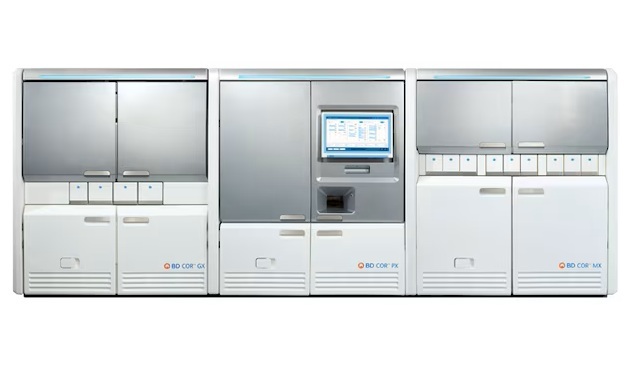
High-Throughput Enteric Panels Detect Multiple GI Bacterial Infections from Single Stool Swab Sample
Gastrointestinal (GI) infections are among the most common causes of illness worldwide, leading to over 1.7 million deaths annually and placing a heavy burden on healthcare systems. Conventional diagnostic... Read more
Fast Noninvasive Bedside Test Uses Sugar Fingerprint to Detect Fungal Infections
Candida bloodstream infections are a growing global health threat, causing an estimated 6 million cases and 3.8 million deaths annually. Hospitals are particularly vulnerable, as weakened patients after... Read morePathology
view channel
New Molecular Analysis Tool to Improve Disease Diagnosis
Accurately distinguishing between similar biomolecules such as proteins is vital for biomedical research and diagnostics, yet existing analytical tools often fail to detect subtle structural or compositional... Read more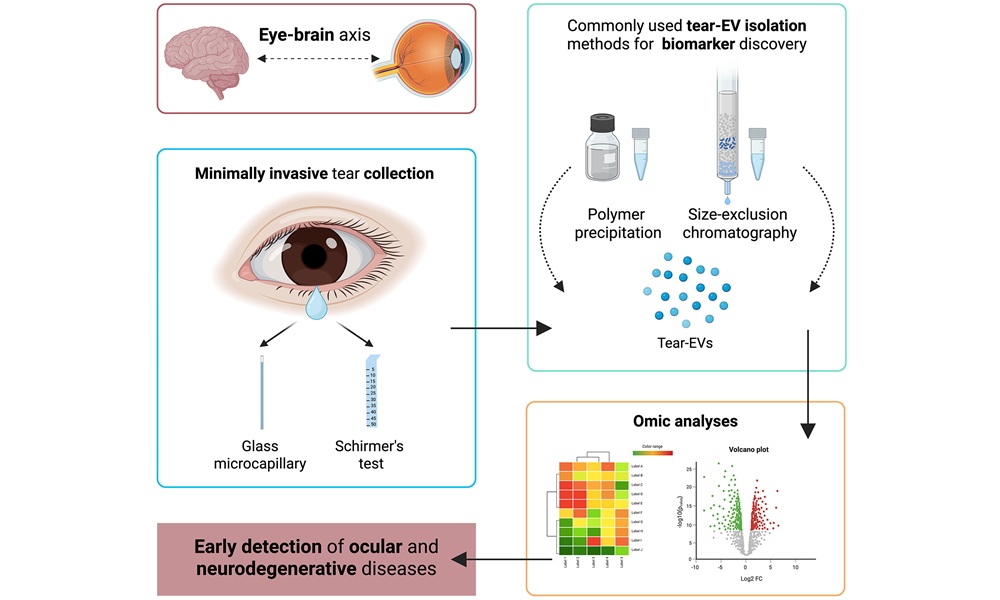
Tears Offer Noninvasive Alternative for Diagnosing Neurodegenerative Diseases
Diagnosing and monitoring eye and neurodegenerative diseases often requires invasive procedures to access ocular fluids. Ocular fluids like aqueous humor and vitreous humor contain valuable molecular information... Read moreTechnology
view channel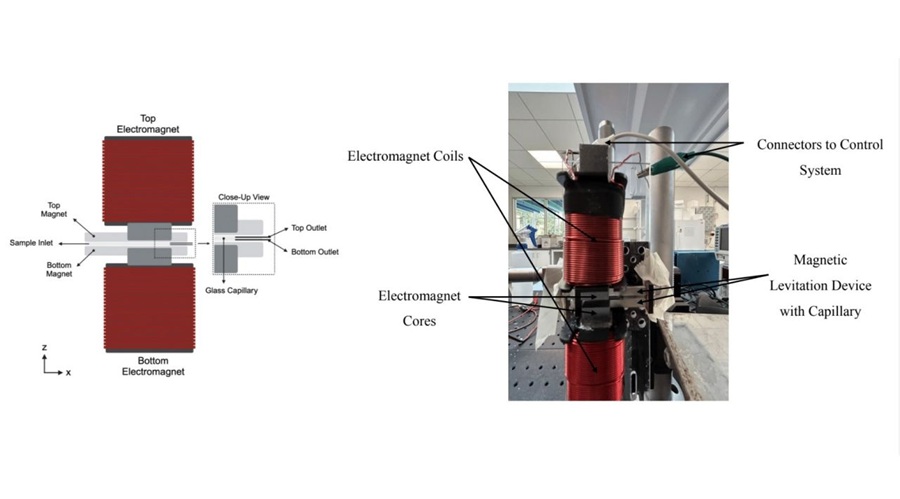
Cell-Sorting Device Uses Electromagnetic Levitation to Precisely Direct Cell Movement
Sorting different cell types—such as cancerous versus healthy or live versus dead cells—is a critical task in biology and medicine. However, conventional methods often require labeling, chemical exposure,... Read more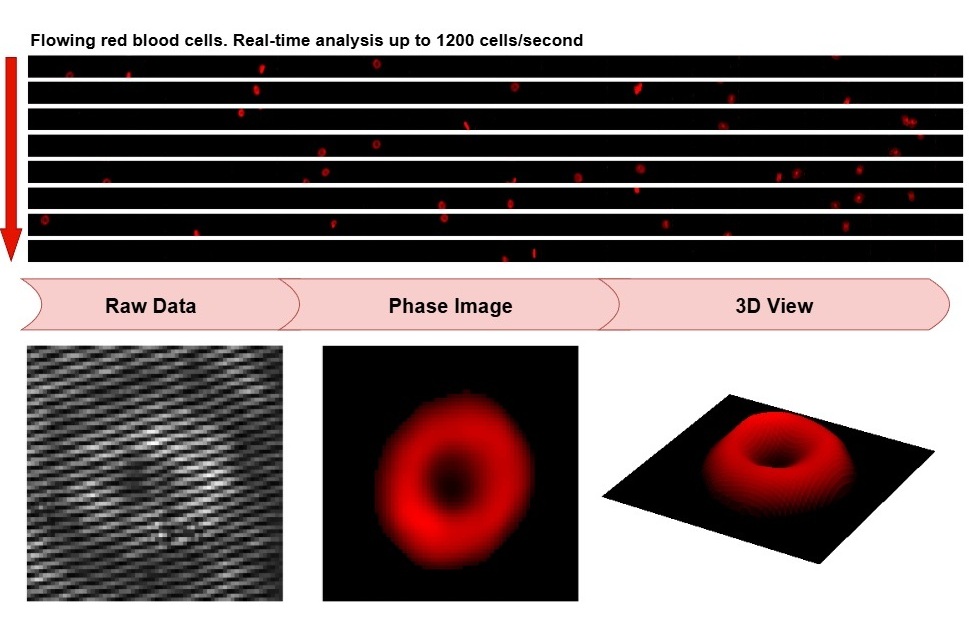
Embedded GPU Platform Enables Rapid Blood Profiling for POC Diagnostics
Blood tests remain a cornerstone of medical diagnostics, but traditional imaging and analysis methods can be slow, costly, and reliant on dyes or contrast agents. Now, scientists have developed a real-time,... Read moreIndustry
view channel
Qiagen Acquires Single-Cell Omics Firm Parse Biosciences
QIAGEN (Venlo, Netherlands) has entered into a definitive agreement to fully acquire Parse Biosciences (Seattle, WA, USA), a provider of scalable, instrument-free solutions for single-cell research.... Read more
Puritan Medical Products Showcasing Innovation at AMP2025 in Boston
Puritan Medical Products (Guilford, ME, USA), the world’s most trusted manufacturer of swabs and specimen collection devices, is set to exhibit at AMP2025 in Boston, Massachusetts, from November 11–15.... Read more
Advanced Instruments Merged Under Nova Biomedical Name
Advanced Instruments (Norwood, MA, USA) and Nova Biomedical (Waltham, MA, USA) are now officially doing business under a single, unified brand. This transformation is expected to deliver greater value... Read more